Image 1 — Courtesy of singlecoil.com
Hello and welcome back to “Mod Garage." This month we'll continue with our relic'ing project, taking care of the rest of the hardware: the bridge including its studs and the strap buttons. This is also the first time we'll discuss some possible upgrades regarding the hardware.
Image 2 — Courtesy of singlecoil.com
When comparing the strap buttons of our Harley Benton DC-Junior guitar (Image 1) with vintage Gibson Les Paul Junior Double Cut ones (Image 2), it's easy to see they have a slightly different shape and are mounted in a different way. While vintage Juniors have the upper strap button mounted on the back of the guitar, our Harley Benton has it on the upper horn, like a Stratocaster. Regarding balancing the guitar when playing it on a strap, I think this is a good upgrade. But if you want to stay more original, you can relocate the strap button to the back of the guitar, closing the hole on the upper horn if you wish.
The original strap buttons have a slightly different shape, and the early models were made out of aluminum, while the ones on the Harley Benton are metal. You can buy aluminum strap buttons with the original shape from several companies if you wish: the Gibson part number is PREP-020. Personally, I'm fine with the ones on the Harley Benton guitar, but I removed the black felt washers underneath them. Vintage guitars don't have these, and because we'll relic the body of the guitar as well, there's no need to protect the finish in these areas.
Image 3 — Courtesy of singlecoil.com
As for the bridge, we have a big difference here. The vintage Gibson has the classic, super-simple, and non-adjustable wraparound-bridge design (Image 3), while the Harley Benton has a wraparound version with six individual adjustable saddles, like a Stratocaster (Image 4).
Image 4 — Courtesy of singlecoil.com
Regarding tuning, this is a real upgrade, but I think it destroys the appearance of this guitar and its design of simplicity. Besides this, the quality of this bridge is only average. It will work, but there are bridges like this on the market with better design and quality. So, if you like the idea of individual adjustable strings, you can keep this bridge or buy one like it with better quality. The studs have a metric M8 x 1.25 mm thread, and the bridge has a post spacing of 82 mm and a string spread of 52.5 mm.
Image 5 — Courtesy of singlecoil.com
I decided to change the bridge for a compensated, non-adjustable wraparound bridge made out of solid aluminum from the KMS company called the “Whiptail" (Image 5). This looks pretty much like the original but is compensated for a better intonation and is a real upgrade regarding tone.
Image 6 — Courtesy of singlecoil.com
I also changed the diecast studs for the KMS version made out of steel (Image 6) and incorporated another upgrade: an additional thumbwheel to lock the studs against the bushings. I do this on almost all Gibson-style bridges to enhance tone and stability. The problem is, there are no existing thumbwheels with a M8 thread, so I had to use a standard thumbwheel and modify it to fit. The system behind this is very easy: Simply put the thumbwheel on the studs as high as possible and screw the studs into the bushings before installing the bridge. After adjusting the perfect height of the studs, get the thumbwheel as low as possible and tighten it so it will lock the studs against the top of the bushings (Image 7). Voila! The whole bridge system is as solid as can be now, and you'll instantly recognize how tone and sustain is enhanced on most guitars, so give it a try. I left the original bushings in place to avoid any possible damage on the lacquer when pulling them out to replace them. The factory-equipped ones are okay and will work fine.
Image 7 — Courtesy of singlecoil.com
You can use the same relic'ing process we used for the metal parts of the tuners and screws in my previous column, “DIY: Relic'ing Tuners, Part 1," but I'll also show you an alternative way to do this. If you want to keep the stock bridge or change it for a similar type with individual adjustable saddles, it's important to completely disassemble the bridge before you start. At first, have a look at the pics of the original bridge and strap buttons, to get an impression of how they look after 50 years and more. Especially on the vintage bridge (Image 3), you can see there is noticeable wear-off where the strings have contact and that everything looks a bit dull. So, as always, break the shine with fine sandpaper or steel wool. If you want to mimic heavy wear-off on the bridge, use a small file or some sandpaper wound around a toothpick or similar, and rub away the nickel plating at the contact points of the strings. Next, put everything inside our box with the mixture of nails, metal parts, broken glass, gravel, sand, little stones, basalt, etc. and shake the devil out of it to create some nice random scratches, dings, dongs, and bumps. When you're happy with the result, take the parts out of the box and use a soft brush to clean them from dust. If you want, you can use iron (III) oxide (ferric oxide) liquid to create even more patina on some random spots of the hardware and the screws. Don't forget to wear gloves and goggles and to use old newspapers to protect the surface you're working on.
You may have heard of the aging method using hydrochloric acid (aka muriatic acid) for hardware. This is a good alternative for the parts we have in the works now. So, why didn't I mention this earlier? For a very good reason: We started with the metal parts of the tuners, and even if you close the hole in the case carefully, more than enough acid fumes will creep into the guts of the tuner, causing corrosion inside. This often results in non-turning tuners that you'll have to replace. The only procedure that's safe for this is to take the tuners apart and only age the cases. We're talking about a very strong acid, so before we start, here are the basic rules to follow to be safe:
- Always wear acid-resistant gloves, goggles, an apron, and respiratory protection.
- Never do this inside your flat. Do it outside or in very well-ventilated areas.
- Keep away all pets and children from this procedure.
- Always have a bowl of clear water near you to stop the process.
- Never put the parts directly into the acid. Only the fumes of the acid should make contact with the hardware.
- Never put the acid into your sink or outside in a sea, river, etc. This is hazardous waste! For disposal, contact your local acceptance point for hazardous waste.
If you feel unsure about this procedure, stay away from it! The “stone aging" process works well and is not dangerous in any way. Safety first is the prime directive here.
You don't need much for this. First and foremost, you need hydrochloric acid. The highest possible concentration of this acid is 37 percent, but I suggest using a 25 percent concentration or less. As a rule of thumb, think of it this way: less concentration equals longer time to expose the hardware to the fumes, but safer handling. You can dilute hydrochloric acid with cold water if you want to get a softer concentration. Always put the acid into the water, never the other way around! This works pretty well on nickel-plated hardware. A higher concentration will work best for chrome-, gold-, and black-plated hardware.
Image 8 — Courtesy of singlecoil.com
We also need to use two plastic boxes that fit into each other, and the biggest one, containing the smaller one, needs a lid (Image 8). Never use any metal or aluminum boxes for this. I recommend using clear plastic boxes so you can see what's going on inside from the outside.
The process works best if you slightly break the shine of the parts with some fine sandpaper or steel wool, and then afterwards clean and degrease them with naphtha. Now put the hardware into the smaller box and the acid into the bigger box. Put the smaller box into the bigger box so it will swim on the acid. Now, close the lid of the bigger box and wait. The fumes of the acid will start the process on the hardware and, depending on the hardware, its plating, and your personal taste, the process can last from a few minutes up to several hours. Check closely for the result, especially when having different kinds of hardware in the box. When you're happy with the result, take the inner box with the hardware out and put the hardware into clear, cold water to stop the process. Afterwards dry it with an old cotton rag or towel, and then you're done!
Again, this is only one way of doing it. You're invited to discuss other options with each other in the comments section online.
Image 9 — Courtesy of singlecoil.com
Here's the result of the process after breaking the shine, putting it in the aging tumbler for an hour, and then a 45-minute treatment in the hydrochloric acid box (Image 9). I think it looks great, and I'm very happy how it turned out.
In the next part of this series, we'll start relic'ing the pickup, including the pickup cover and the screws, and talk about pickups for such a guitar in general. But first, we'll have a deeper look into another guitar mod next month: the combined “preset/deck" solution for series switching on a Stratocaster.
Until then ... keep on modding!


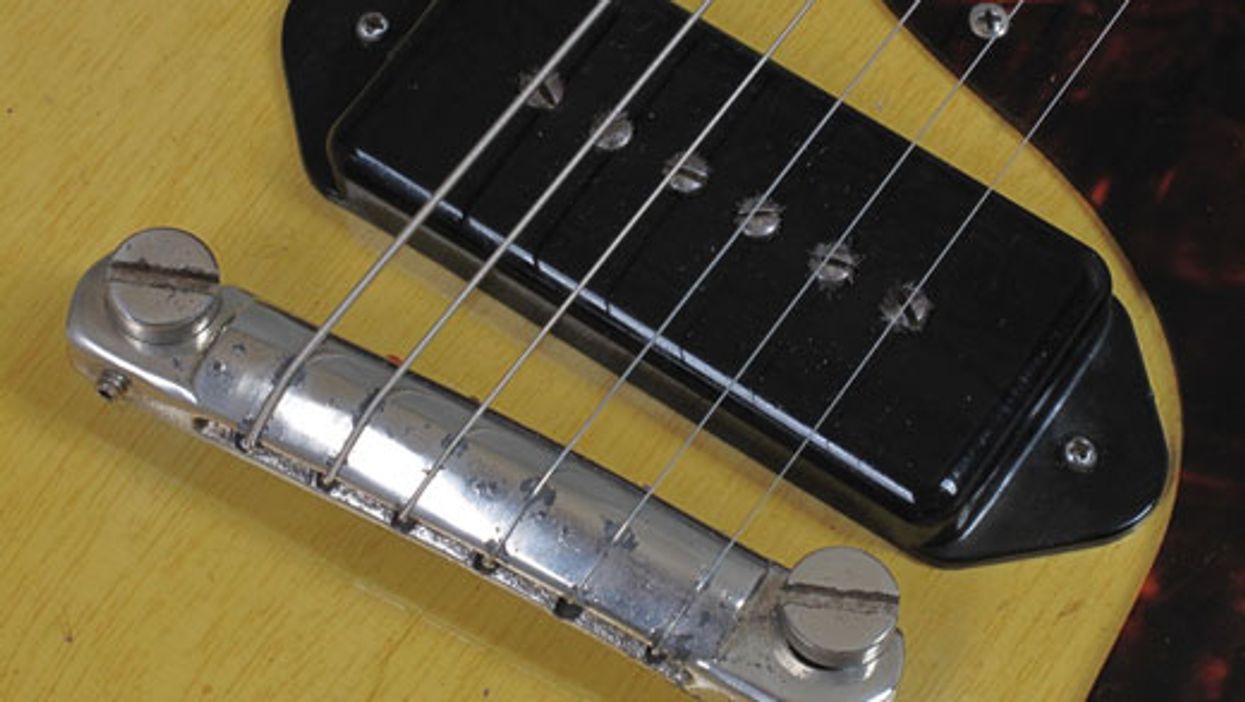

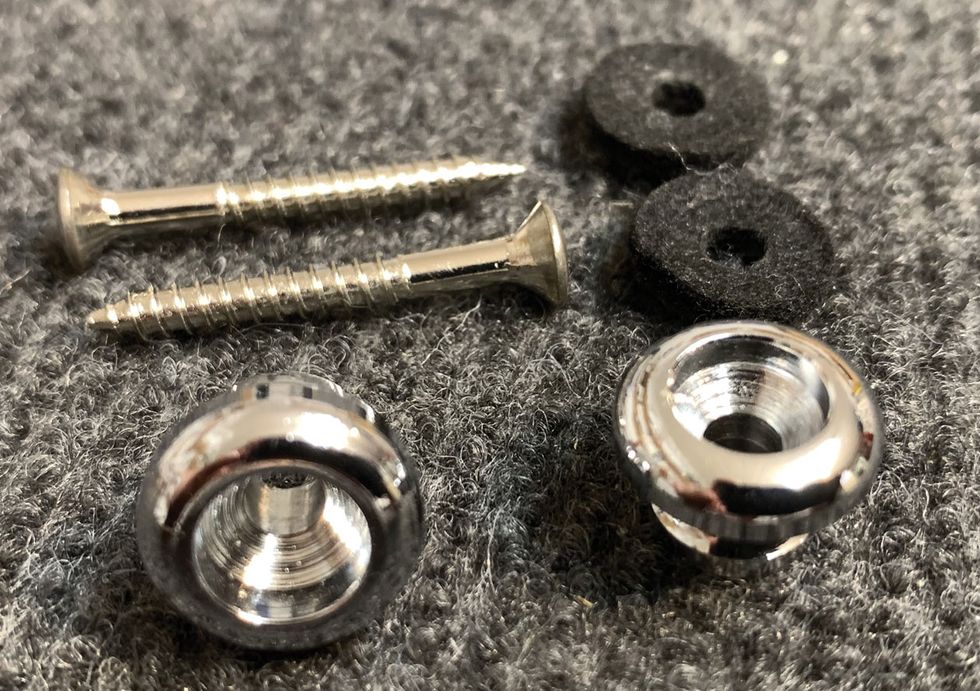
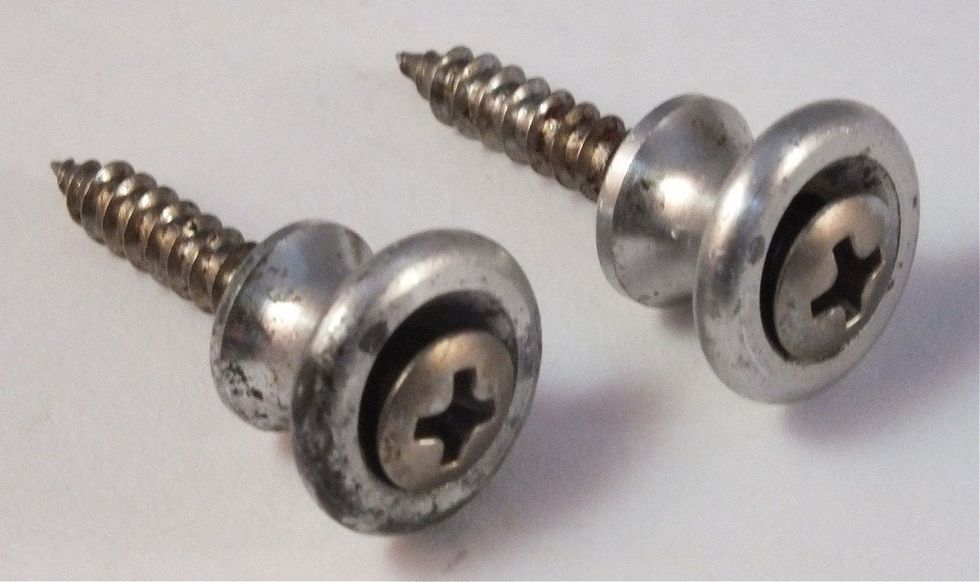
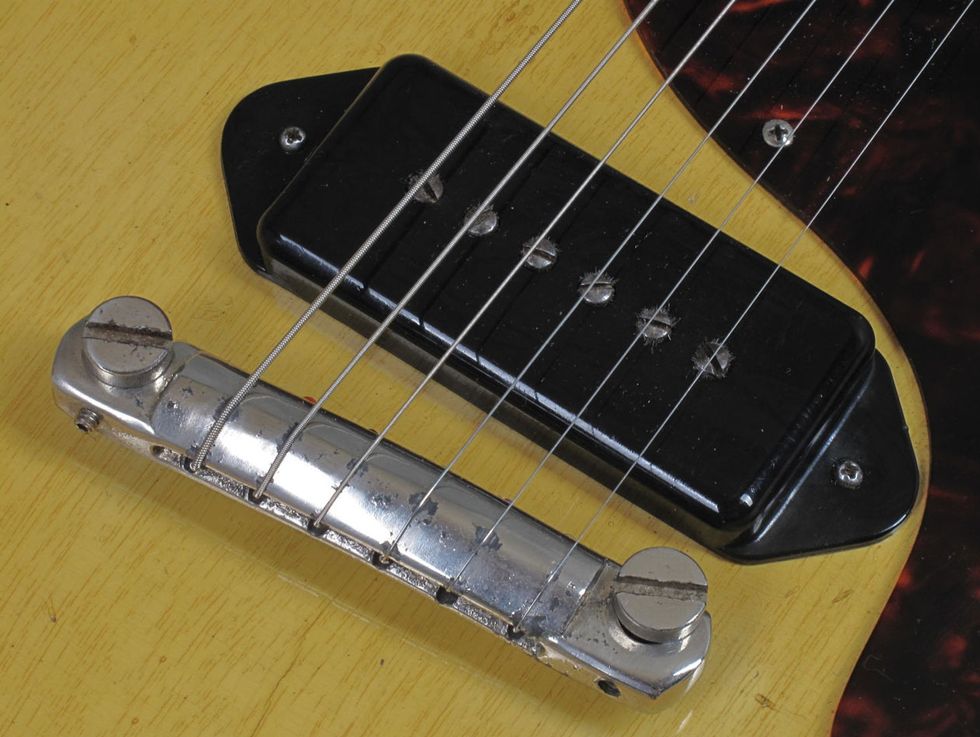
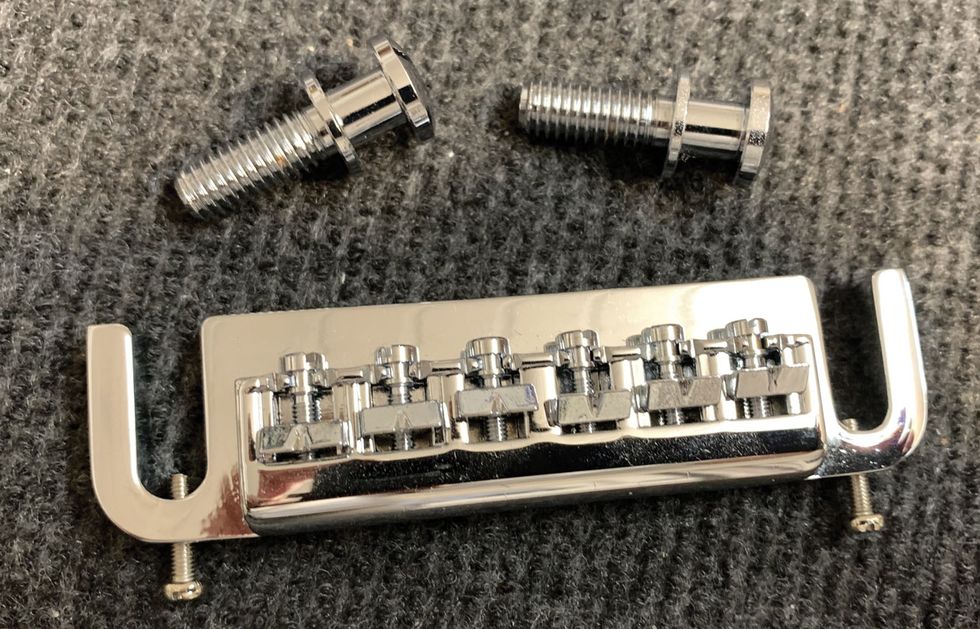

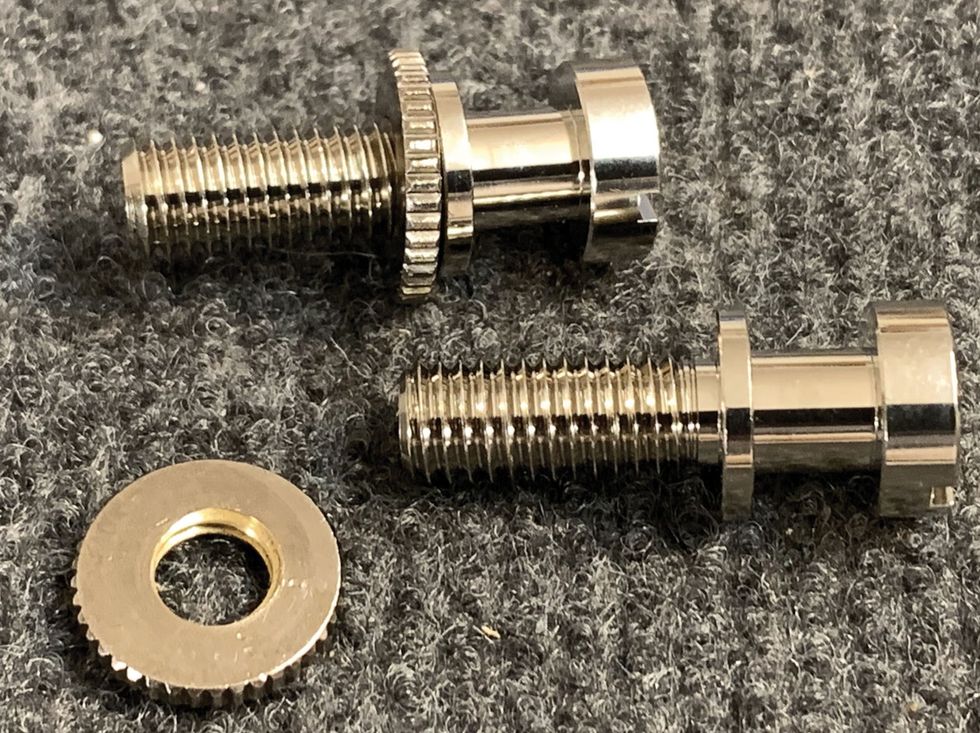
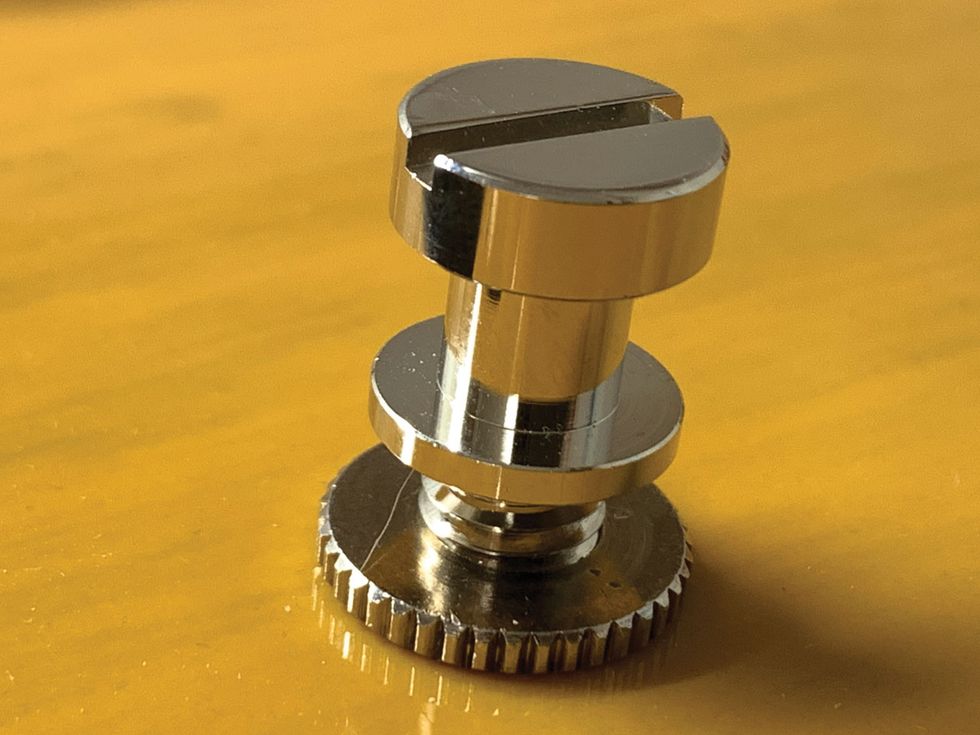
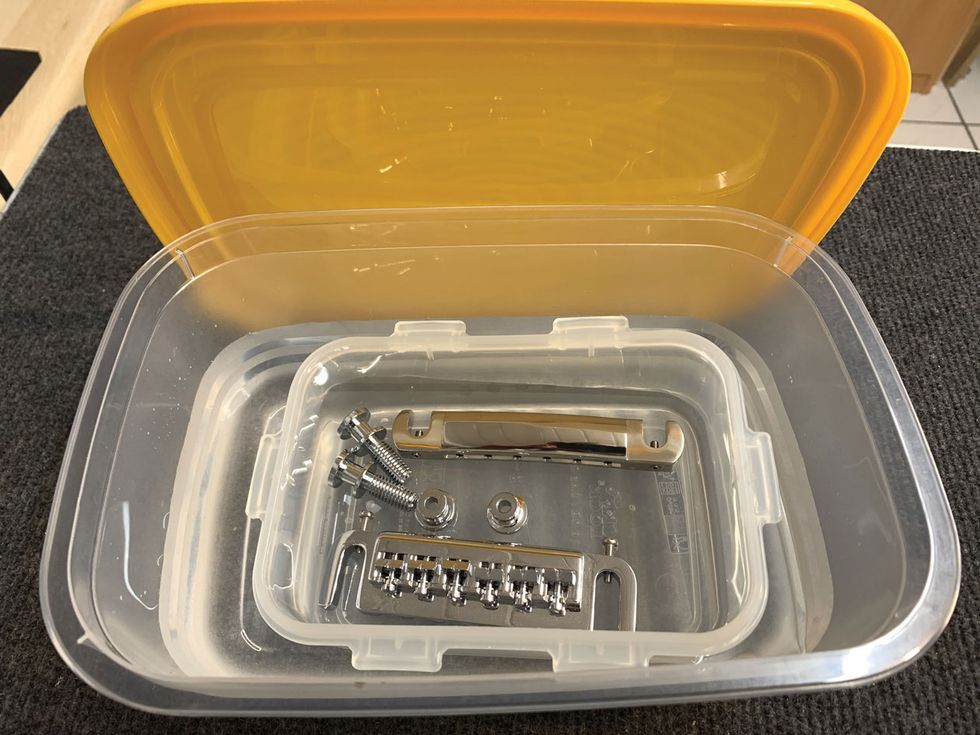
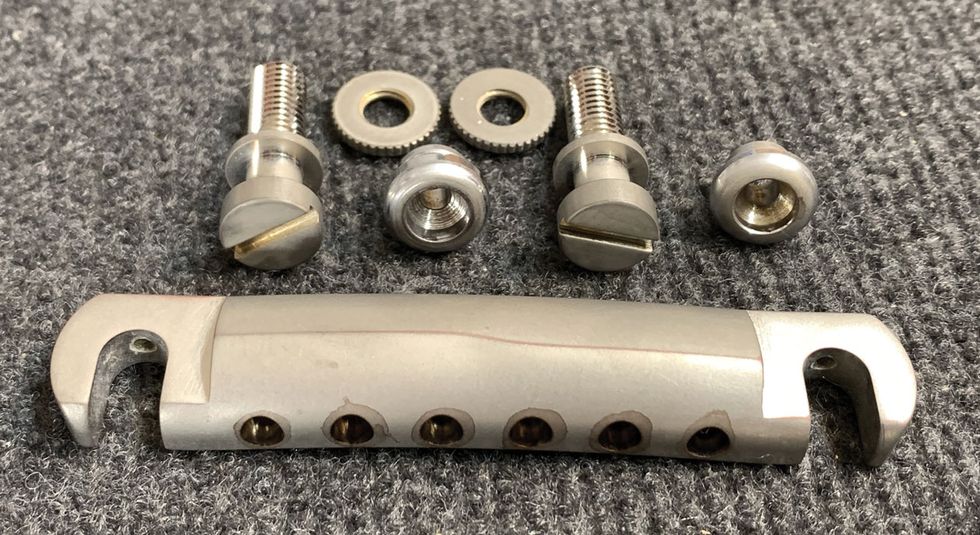




![Rig Rundown: Russian Circles’ Mike Sullivan [2025]](https://www.premierguitar.com/media-library/youtube.jpg?id=62303631&width=1245&height=700&quality=70&coordinates=0%2C0%2C0%2C0)


























